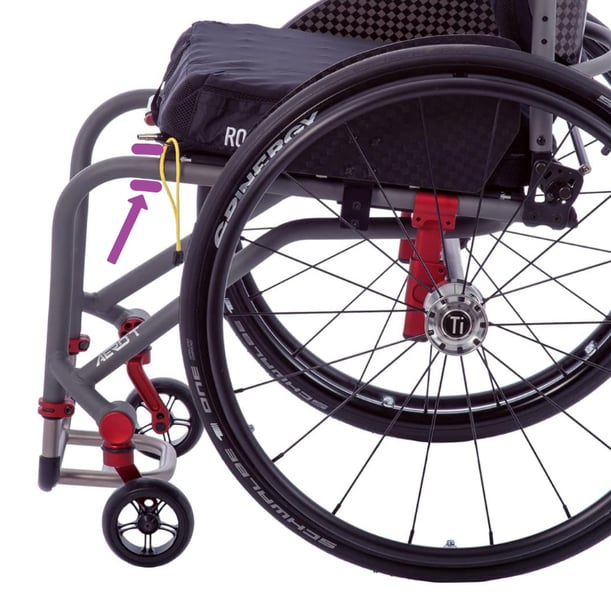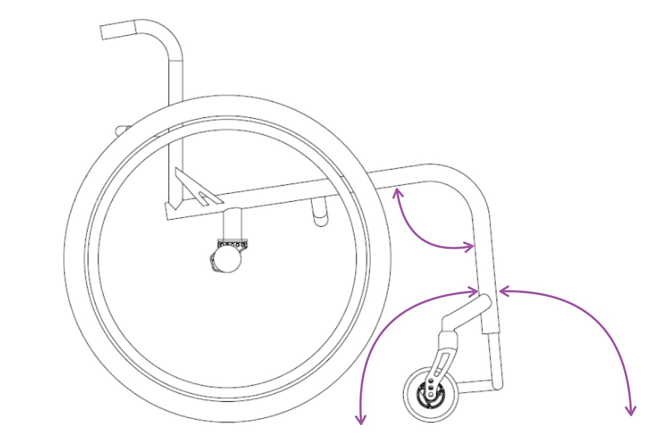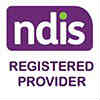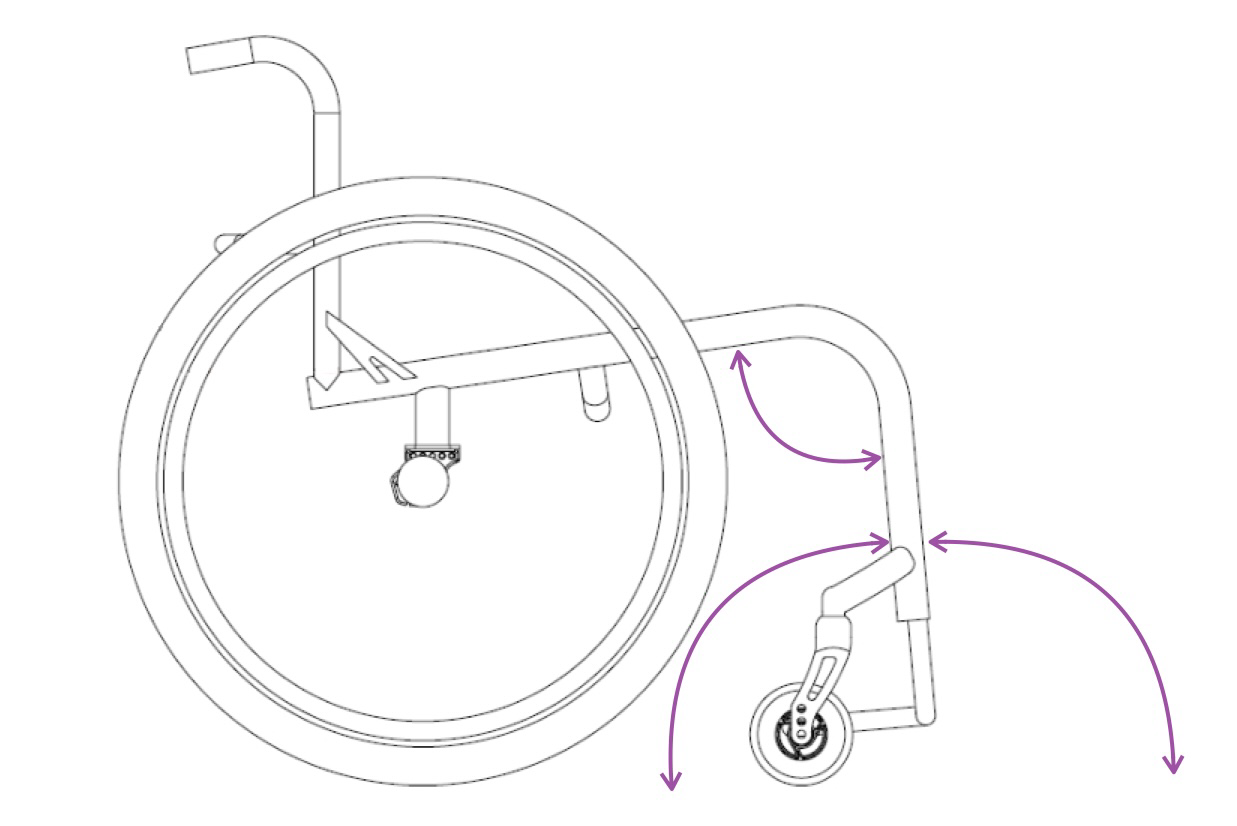
When scripting a custom manual wheelchair, there are several parts of the frame that can be customised to the individual. Among the considerations in customising these wheelchairs are the front end angle and front frame depth. These elements profoundly impact manoeuvrability, stability, and overall user experience. In this blog post, we delve into these two elements of a wheelchair script, and how they contribute to optimising the wheelchair set up for the user.
Firstly, let’s look at the frame depth. The frame depth is the measurement from the end of the seat upholstery to where the front frame angle begins to bend. We’ll use a couple of TiLite manual wheelchairs to show the difference to keep comparisons between the same manufacturer.
This TiLite ZR has no extended frame depth, the bend in the front angle begins at the end of the seat upholstery:

This TiLite Aero T has a longer frame depth. The seat frame continues for approximately 1.5” before the frame begins to bend:

Most wheelchairs tend to have around 1” of frame depth after the upholstery and before the front tubing begins to bend, but there are occasions where an individual might benefit from an extended frame depth. Often, it’s to assist with transfers as the wheelchair user can hold into the extended frame for stability during transfers. Sometimes the user would like a tighter front end angle as they like the frame to sit alongside their legs, but need the footplate positioned further out to accommodate a comfortable foot position. Extending the frame essentially brings the footplate further forward while maintaining a tighter front frame angle.
Next, we have the front end angle. The front end angle is usually measured from the horizontal plane of the floor to the front frame of the rigid wheelchair, or the back of the front hanger to the ground. Although occasionally, just to keep us on our toes, it can be measured at the frame bend or from the front of the front hanger to the ground. It is important to know how the front end angle is measured by the particular wheelchair manufacturer as the same hanger angle on paper can be very different in reality depending on how it is measured. If you're feeling confused by this, there's no need to worry. Our AT Consultants understand the differences between manufacturers and their methods of chair measurement and will guide you through.

The front end angle directly affects lower extremity position and the overall footprint of the wheelchair, which significantly impacts manoeuvrability and environmental impact.
The front end angle impacts on lower extremity positioning, alongside other parameters like seat to floor height. If the front end configuration alongside the seat to floor height places the footplate too far forward and puts the person’s knee angle in a position they cannot accommodate, we will tend to see postural changes like postural pelvic tilt and sacral sitting so that the person can place their feet on the footplate. If the front end angle is too tight and the person’s quadriceps does not allow that range, we’ll tend to see the person move into anterior pelvic tilt.
The front end angle also impacts the wheelchair's stability, especially during forward propulsion and sudden stops. Stability is influenced by both the front frame angle and frame length, as both these influence the position of the casters. A more significant angle, or tighter angle, will generally result in an easier to manoeuvre wheelchair, but can increase the wheelchair's tendency to tip forward, particularly when descending ramps or traversing uneven terrain. Conversely, a smaller angle, where the overall length of the chair is increased, may improve stability, especially when picking up items from the floor, but could compromise manoeuvrability.
Another factor to consider when deciding upon frame angle is the user’s lifestyle, environment and goals. The front end configuration plays a major role in determining the overall footprint of the wheelchair (alongside seat depth, seat to floor height and rear wheel position) and should be considered alongside environment access and transfer needs. Do they have to navigate spaces with limited circulation space regularly and need a really compact footprint? Are they travelling over steep inclines or declines regularly and good stability is vital? Does the wheelchair need to fit into a small car boot, or does the user need to lift the wheelchair over themselves onto the passenger seat during vehicle transfers? Interestingly, new wheelchairs like the TiLite CR1 are being designed with environmental access in mind, where the dual angled front end allows the user to get up close to furniture and other items for easy access and transfers, and for some individuals this will be a perfect option for them to allow an optimal front end angle for positioning and stability, while still allowing for easy access and transfers.

As we can see, paying attention to detail in various frame customisations is paramount to cater to individual needs. The front end angle and castor position play pivotal roles in shaping manoeuvrability, stability, and overall user comfort, and understanding frame depth variations and the nuances of front end angle measurements across different manufacturers is essential for precise customisation - and that’s where GTK come in.



